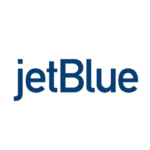We’re excited to launch our latest research series—The Great Inversion.
What’s The Great Inversion, you ask?
Think of it as the Lufthansa Innovation Hub’s innovation roadmap for the travel and mobility tech sector—a compass guiding our strategic decisions as we delve into startup creation, investment, and partnership.
The Great Inversion is more than just a content storyline.
- In fact, it’s our core industry thesis that deciphers the future trajectory of the Travel and Mobility Tech ecosystem.
- It is our manifesto for the next decade, a belief system that aids us in navigating the complex currents of our industry.
- It’s a blend of intuition, analysis, and predictions built upon extensive research and understanding.
For a basic explainer of what you can expect to learn about, here is a brief introduction.
Dissecting the Value Chain and Rewriting the Rules
In our quest to make sense of the pivotal transformation sweeping across the travel and mobility industry, we have closely examined the underlying value chain that defines our industry.
We believe to have identified the “changing rules of the game.”
This perspective is particularly powerful, as all industries and companies can be characterized by their value chain—a sequence of value-adding activities that flow from supply to demand. Every industry develops a dominant logic, a rulebook for successfully matching supply and demand, often operating beneath the surface of our conscious awareness.
Innovation emerges when these rules are challenged and rewritten, making it our preferred lens for innovation.
By understanding the evolving dynamics of our industry’s value chain, we stand at the forefront of identifying and seizing opportunities for breakthrough innovation that will reshape the future of travel and mobility.
Challenging the Asset-Driven Logic
In the current landscape of the travel and mobility industry, the value chain is predominantly driven by asset-centric logic.
This means that the value creation process revolves around the supply of existing assets such as airplane seats, cabin beds, or entire aircraft fleets. Through the value chain perspective, we observe that value creation primarily flows from left (supply) to right (demand), resulting in a market where assets are consistently pushed towards consumers.
This asset-driven value chain is characterized by several dominant principles:
- Asset-focused planning: Major planning processes primarily center on assets rather than the consumer. In the airline industry, for example, this is evident in the emphasis on Network Planning, Revenue Management, and Crew Planning.
- Supply-driven growth: Industry growth is primarily defined by increasing supply (e.g., larger fleets, more flights) and optimizing asset operations (e.g., margin engineering). This approach easily leads to oversupply, resulting in lower profitability and a lack of focus on customer needs.
- Asset-driven differentiation: Competitors often differentiate themselves solely based on their assets, such as by frequently renewing aircraft fleets. In fact, this asset-centric approach is commonly used to address various industry challenges. For example, airlines often turn to larger planes as their primary solution to tackle a range of industry issues like airport congestion, rising costs, and pilot shortages.
For decades, travel and mobility businesses have successfully perfected these asset-driven principles for commercial viability and growth.
However, the industry’s asset-driven growth is reaching its limits.
New growth demands a new logic—a shift in the underlying business logic from “left to right” to “right to left.” As we delve deeper into the travel and mobility value chain, we will explore how the “rules of the game” are being redefined, challenging and rewriting the traditional, asset-driven approach.
Envisioning a Consumer-Driven Future
The Great Inversion represents a shift towards a consumer-driven value chain logic that will unlock new growth opportunities in the travel and mobility industry.
We are already witnessing the emergence of this future as it begins to take shape across five aspects of our value chain. In fact, The Great Inversion consists of five specific trends that you can each explore via the links below.
We believe that understanding and embracing this consumer-driven value chain logic is mission-critical for our industry to generate new growth and thrive in the rapidly evolving landscape.
🧑🤝🧑 Trend #1: Communities Define Demand. A growing portion of demand is being shaped by communities that make decisions differently and expect novel offerings and information.
🎮 Trend #2: Advanced Travel Means. Diversified travel use cases are challenging the industry’s traditional concept of demand, with some use cases evolving towards virtualization or complete reimagination over the next decade.
📱 Trend #3: Embedded Travel. As technology enables travel inspiration and booking to occur anywhere and anytime, new opportunities arise for everyone.
🤝 Trend #4: From Transactional to Relational. New business models will usher in a post-ticket era where share-of-mind trumps share-of-wallet, transitioning from transactional to relational interactions.
🛩️ Trend #5: Diversified Asset Competition. The increasing commoditization of supply challenges the asset-driven logic of the travel industry. Competition grows more diverse, with market incumbents, startup airlines, and alternative forms of transportation or technology vying for their share of the market.















